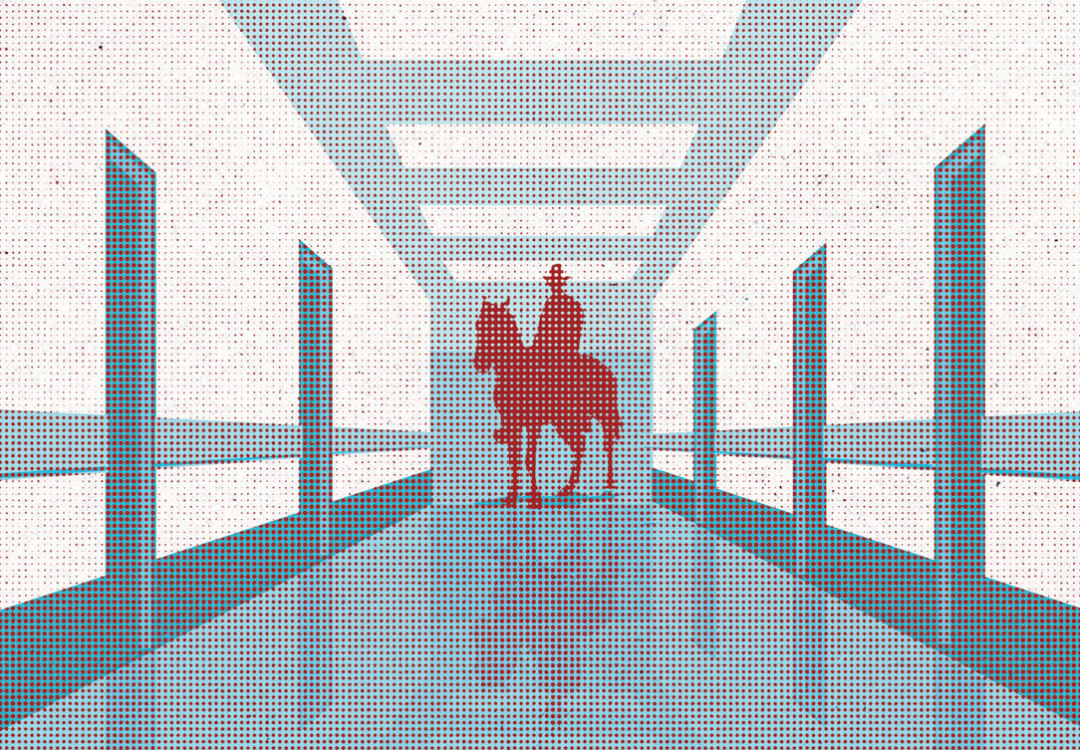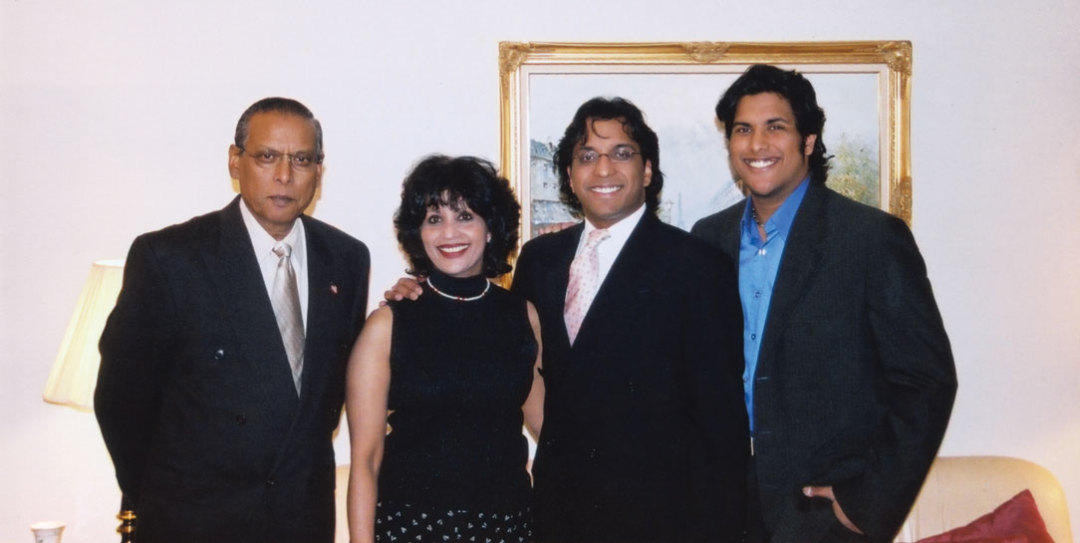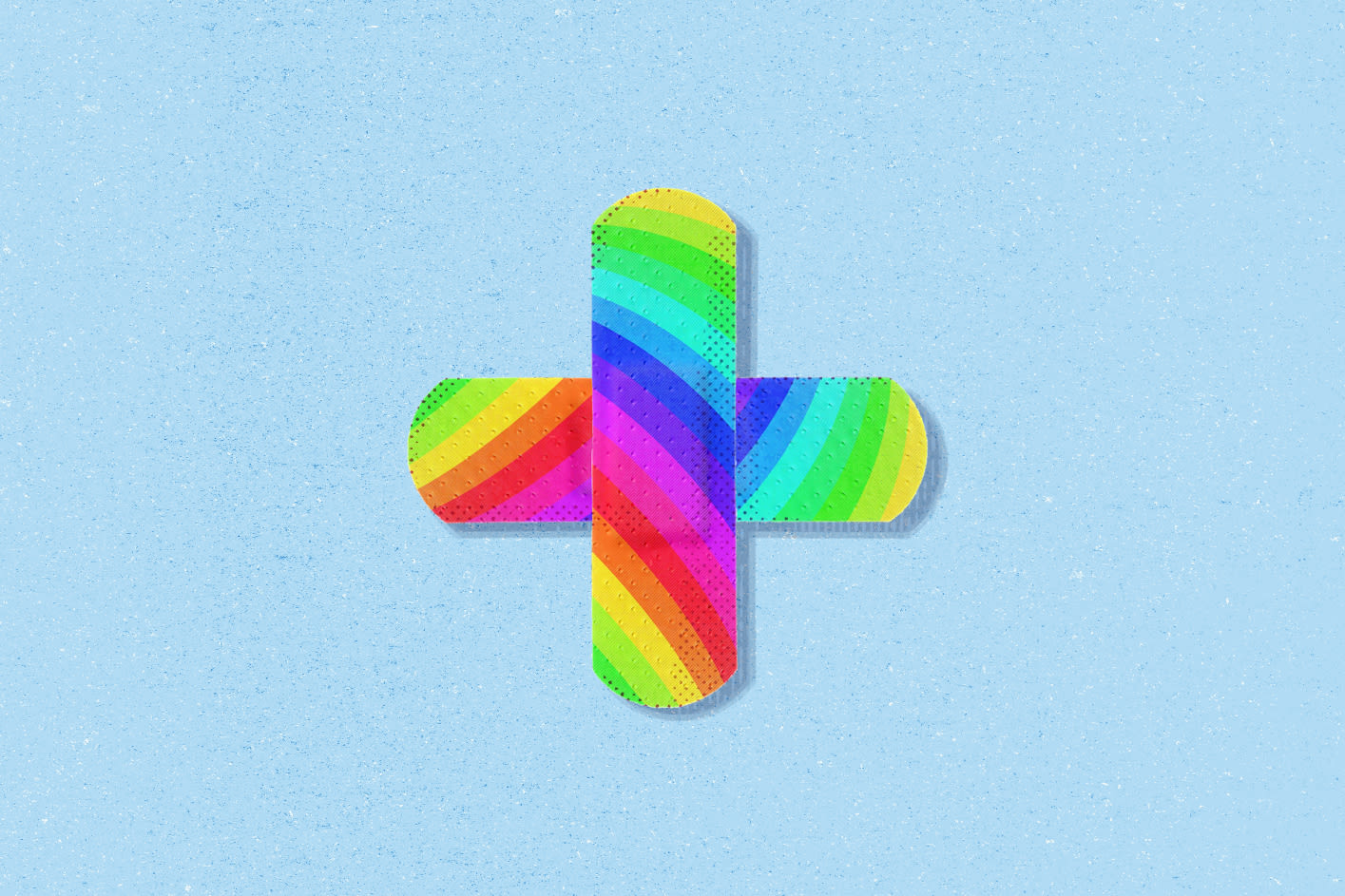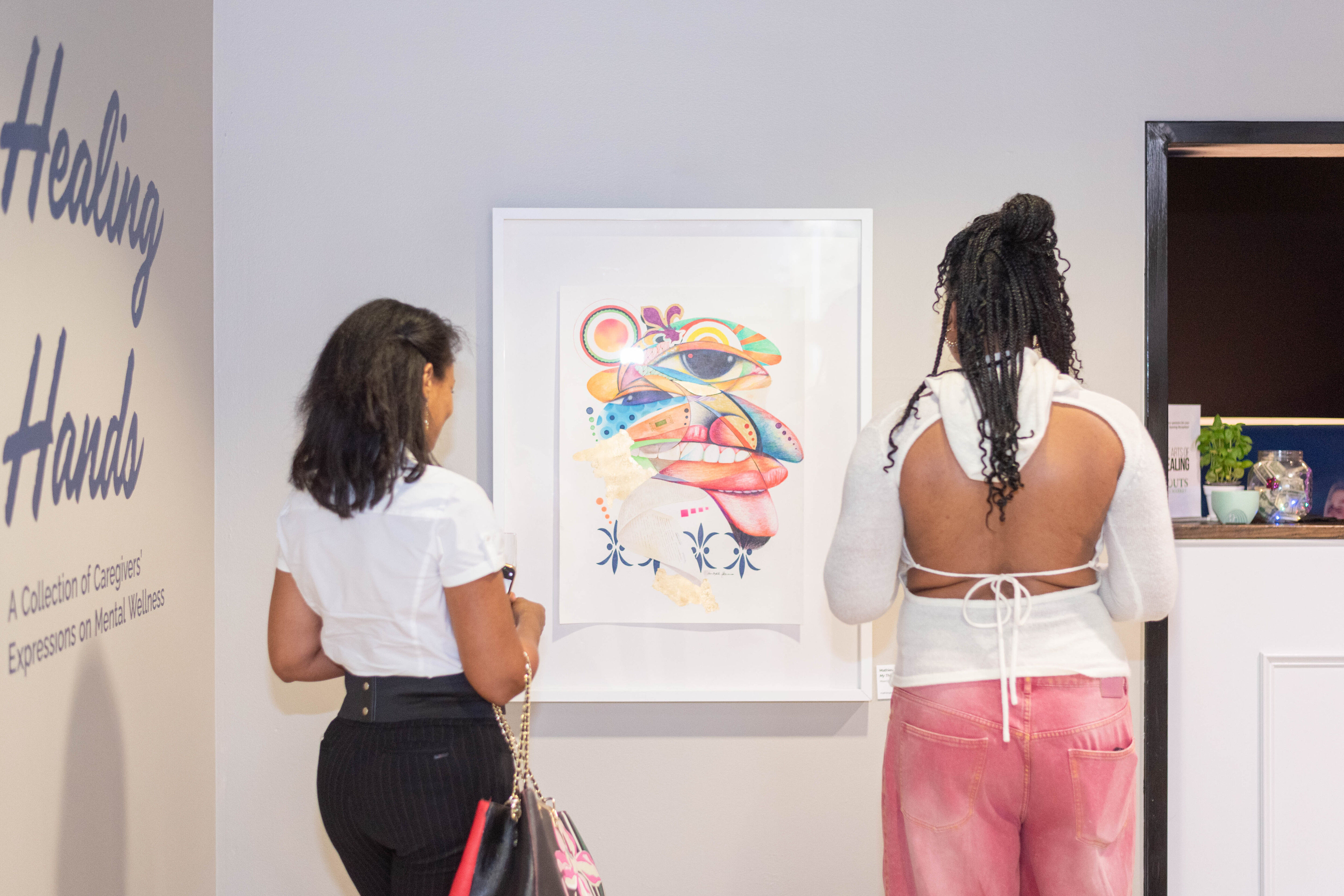How Dr. Red Duke Saved My Dad

Image: Dan Page
As my foot hit the pool of blood, I slipped and—in what felt like slow motion—fell squarely on my back.
I had burst through the doors leading to the helipad—against yelled orders from security—to meet the Life Flight helicopter. Members of the crew, moving with incredible speed and skill, had already unloaded the stretcher and raced past me into the building, barking orders at the surgical staff.
I got up, collecting myself under a night sky illuminated by helipad lights, surrounded by the roar of spinning helicopter blades and the whipping wind. I wasn’t supposed to be here. I had seen police. Would they arrest me? I needed to get to Dad, who’d already disappeared inside. To find him, all I had to do was follow the winding, crimson trail of his blood, straight to the trauma-center operating room of Memorial Hermann Hospital.
My father was dying. Someone had viciously stabbed him three times in his chest. Adding to the unthinkable: the blood-thinning heart medication Dad was taking had turned his wounds into geysers of blood. So it was there, in the darkened hours of December 4, 1996, that I readied myself for the inevitable.
He was a 54-year-old heart patient who’d been stabbed near the heart, and as he entered surgery, the reports got worse. His right lung collapsed. More blood was needed. And more. And more. Defibrillator paddles were ordered, should he flatline. I had watched this scene play out on ER and in the movies, and I knew exactly how it ended.
I’d beaten my family to the hospital. Soon my mother, Sona, and 14-year-old brother, Joe, arrived, having raced to the Medical Center from our Fort Bend home. We huddled together in the waiting room. Uniformed police arrived to interview my mom. Frantic and desperate, I snapped at one of the cops: “Who tried to kill my dad? Why are you people here, when the bastard is out there?” The police were patient, but to me the whole situation felt lost. We received a report that Dad had lost 95 percent of his blood—which didn’t seem humanly possible—as transfusions coursed through his faltering body.
Endless hours later, as I sat on the floor, I looked up to see an instantly familiar, red-haired man in stained scrubs emerge from the trauma surgery room. As a nurse whispered to Dr. James Henry “Red” Duke, he scanned the room, found my mom, and walked toward her. She steadied herself. I held my breath. And then, as he took Mom’s hand, Dr. Duke’s molasses-smooth drawl warmed the air:
He’s gonna make it.

Joseph, Sona, Steven and Joe Devadanam, circa 2003.
Image: Courtesy Steven Devadanam
The details emerged as Dad regained consciousness and lucidity and the Harris County Sheriff’s Office detectives investigated the case. Dad had called Mom from the home of a former employee from his days in air-conditioning design, whom he was helping fix a broken heater until late into the night. On his way back, he saw what he called a “well-dressed young man” at an intersection. The man—whose “earnest” appearance Dad later said reminded him of me—knocked on his window and asked for a ride home, pointing to his stalled car. Dad drove him to a nearby neighborhood and stopped by an automotive shop. It was here, he told us, that he felt three hard jabs to his chest. Thinking he’d been punched, he looked down to see blood gushing from his shirt. He remembered taking a swing at the retreating man and then, in seconds, going blank.
He awoke to a boom, smoke and flames: the assailant had set fire to his car. The police confirmed that the car’s back end and rear tires had exploded. Had there been more gas in the tank, Dad would’ve been engulfed in flames. Instead, drenched in blood, he dragged himself out of the car, yelled for help, and passed out again. Witnesses in nearby homes, alerted by the commotion, smoke and flames, called 911. Police and ambulance responders immediately called for Life Flight. Miraculously, before he went into shock, Dad mumbled our home phone number—which the crew called continuously until Mom answered—and that he was on blood thinners.
I’ll tell ya’, that there is one tough sonofabitch.
Dr. Red, as Joe and I called him, regularly repeated those words about our father as he guided us through Dad’s emergency surgery, lung-fluid-draining procedures, and nerve-wracking cardiac tests. Dr. Red had saved his life. For weeks after, he comforted my Mom, telling the “pretty lady” that her dark hair, tailored suits and refined speech reminded him of Jacqueline Kennedy. (Coming from the man who’d saved the life of Gov. John Connally from an assassin’s bullet in 1963, the comparison carried that much more weight.) Diagnosing my brother’s plain-faced terror, Dr. Red counseled him with sports talk. I’ll never forget the evening I discovered the doctor speaking solemnly to my brother, who was hanging on every word.
“Look Joe, nobody wants to hear this,” Dr. Red began. I froze, bracing for the worst of news. “But the 1994 Houston Oilers will go down as the best damn team never to win a Super Bowl. You mark my words.” (I’m not sure, but I may have excused myself and immediately puked.)
Dr. Red and I talked shop. He marveled at my dad, who at one time had trained for boxing by breaking bricks with his fists. Grateful the assailant’s knife didn’t penetrate his heart, I asked the doctor about the possibility of cardiac complications. With a weakened heart and lungs, there was no guarantee Dad wouldn’t succumb to his many issues. “You a med student?” Dr. Red would ask, impressed when I trotted out a complex medical term. The doctor loved that I came from a medical family, that both my grandparents were doctors, and that my grandfather had been a guest lecturer at Texas A&M, his own beloved alma mater, and involved in the Houston Livestock Show & Rodeo, another shared passion.
Dad’s case dragged on, and no assailant was ever found, despite numerous leads. One evening, fed up with an investigation that was leading nowhere, I calmly described to a childhood friend visiting Dad at the hospital my meticulous plan to find the attacker and kill him myself. I turned to see Dr. Red staring at me, before turning his attention to another family. My icy, seething revenge fantasy instantly gave way to shame.
Dr. Red oversaw Dad’s care at the Memorial Hermann ICU for two weeks, then Mom had him transferred to Houston Methodist for another two weeks to treat a worrisome case of pneumonia. The situation was daunting: the attacker was out there, and he had our address, thanks to the wallet he’d stolen. Meanwhile, Dad was battling a potentially fatal lung infection. We were on our own. As the presumptive man of the house, one nearly unhinged by a lust for vengeance, how was I supposed to manage this trauma without Houston’s legendary trauma guru?
Dr. Red’s country Zen sendoff echoes in my mind to this day:
You’re a real smart guy, bud. You take care of that family. You get yourself right.
When Dr. Red died this year on August 25, I marveled at how many of my Facebook friends had similar stories of him saving their loved ones. Days later, I joined the hundreds who’d gathered at his public memorial. I patted his stained white lab coat, which was on display, and took pictures of his hat, boots, and colorful cowboy and A&M paraphernalia. All around me were Medical Center veterans who remembered how Dr. Red launched the fledgling Life Flight program in 1976—which today boasts some 140,000 flights over almost 40 years.
I eventually struck up a conversation with nurse Tina Baker, who told me she’d worked for Dr. Red for more than a decade. In fact, she’d even looked after his mother, Helen. We laughed about Dr. Red’s fondness for leeches as a healing treatment and how he’d spit his chewing tobacco in patients’ trashcans. How he could call her “fat” without being insulting, and how he kept the staff late every night because “the most important person is the patient.” And then, teary-eyed, Tina described the adoration she and her colleagues had for him: “You’ll meet ten thousand people like me who hero-worshipped him,” she said. “He hated that, because he wasn’t just one of the greatest surgeons in history—he was the most unassuming, humble man I’ve ever met.”
Back home, Mom reminded me that Dr. Red gave us Christmas with Dad that fateful December—something that seemed too much to wish for when he was helicoptered to the hospital. Overwhelmed at the thought of how Dr. Red’s death would affect his four children, I called my brother. We decided that the perfect Dr. Red tribute song was “My Heroes Have Always Been Cowboys,” by his friend Willie Nelson. It was a comforting thought, but I didn’t feel comforted. Why was I taking his passing so personally? Then it hit me.
“I just wish he knew…” I started, choking on my words. My younger, wiser brother stopped me, and reminded me how Dr. Red had set me straight nearly two decades ago. I hung up and put on Willie’s song. In tribute to my dad, who died in 2012—16 years after that awful attack—I poured myself his favorite scotch and went outside. I raised my glass to the stars, and thanked Dr. Red—wherever he was—for, in true cowboy style, riding in and saving my family from a hellish nightmare. I thanked him for doing what no one else could have, all those years ago: redirecting my blinding rage and healing me. I told him that since then, I’ve tried my best to make him proud by being smart and taking care of my family.
And I got myself right.




